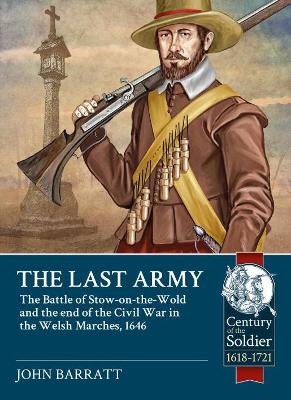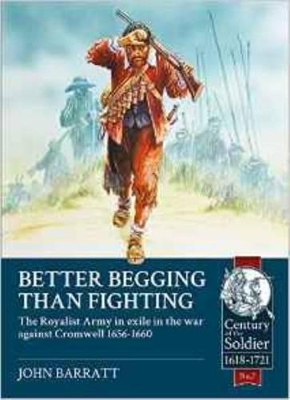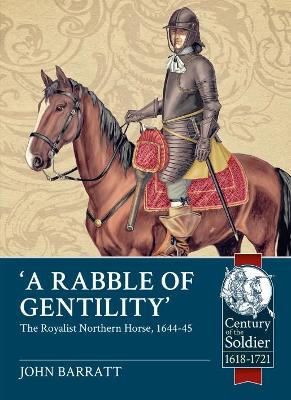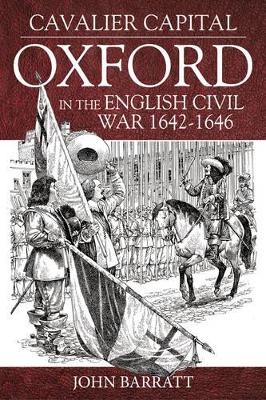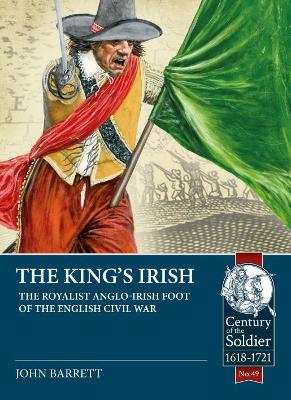Century of the Soldier
5 total works
Although the Battle of Naseby (14 June 1645) is generally regarded as the decisive action of the First Civil War, dooming the Royalist cause to inevitable defeat, fierce fighting continued for over a year, including several pitched battles and numerous sieges.
By the end of 1645, with his forces crumbling and his territory shrinking, King Charles' hopes were increasingly dependent on the Royalist heartland of the Welsh Marches and the tiny field army which Jacob Lord Astley was struggling to muster there.
This book describes the often dramatic preliminaries to this and sets in context Astley's campaign which ended on 21 March 1646 with his defeat at Stow-on-the-Wold - the last pitched battle of the First Civil War, together with the last stand of the royalist garrisons in the Marches.
This book, making comprehensive use of both Royalist and Parliamentarian sources, will be the first complete detailed study of these events which finally doomed Royalist hopes in the First Civil War. It will be of interest to military and local historians, the general reader, re-enactors, wargamers and modellers.
By the end of 1645, with his forces crumbling and his territory shrinking, King Charles' hopes were increasingly dependent on the Royalist heartland of the Welsh Marches and the tiny field army which Jacob Lord Astley was struggling to muster there.
This book describes the often dramatic preliminaries to this and sets in context Astley's campaign which ended on 21 March 1646 with his defeat at Stow-on-the-Wold - the last pitched battle of the First Civil War, together with the last stand of the royalist garrisons in the Marches.
This book, making comprehensive use of both Royalist and Parliamentarian sources, will be the first complete detailed study of these events which finally doomed Royalist hopes in the First Civil War. It will be of interest to military and local historians, the general reader, re-enactors, wargamers and modellers.
Cromwell's alliance with France in 1657 opened for the English Republic and Charles II's army in exile a new theatre of war in Flanders - in addition to England's ongoing war with Spain. It resulted in the old opponents of the Civil Wars in Britain meeting in combat once again. This book tells the story of the two armies: Charles II's polyglot army of Irish, Scottish and English soldiers - fighting for the Stuarts for a variety of reasons - and the expeditionary force despatched by Cromwell to assist his French allies, with the objective of securing Dunkirk as an English possession. The book, the first detailed study in English, will relate how the two armies were raised and equipped; the commanders and their colourful personalities; and the lives of the soldiers and their campaigns - climaxing with the Battle of the Dunes and the siege of Dunkirk. It will examine the English garrison, and the later history of this and of Charles II's 'forgotten army'. It will also look at the Spanish and French armies, with which Royalists and Republicans were allied. Full use will be made of contemporary and more modern sources - including the letters, journals and memoirs of participants on both sides. The book will be of interest to historians and students of the period, re-enactors and wargamers, and to all interested in a little-known conflict fought across an area much more familiar to English readers for its later wars.
General George Monck once described the Royalist horse as "a rabble of gentility". Modern research has largely dispelled this image of the King's cavalry. However the description seems at first sight appropriate to the body of cavalry known as the "Northern Horse". Formed from those elements of the Marquis of Newcastle's Northern Royalist Army which elected to continue to fight after the crushing defeat at Marston Moor (2 July 1644) during the next 15 months the Northern Horse swept across much of England and Wales , becoming increasingly notorious in the process.
United and reorganised by their commander, the formidable Sir Marmaduke Langdale, the Northern Horse, whilst professing loyalty to the King, increasingly followed their own agenda, of renewing the war in the North, sometimes at the expense of the wider Royalist cause.
This book looks at the origins and composition of the Northern Horse, the characteristics of its officers and men, their motivation and behaviour, and their impact on those they encountered. It examines their chequered fighting record, a subject of debate even among contemporaries. It will deal with their victories, notably their epic relief of Pontefract in March 1645, and their controversial role at such encounters as Naseby and Rowton Heath.
The book makes extensive use of contemporary sources, some used here for the first time. Extensively illustrated, including specially commissioned artwork and maps, 'Rabble of Gentility?' will be welcomed by readers interested in the history of the British Civil Wars, living history enthusiasts, wargamers and model makers, and those interested in the history of Northern England in the 17th century.
United and reorganised by their commander, the formidable Sir Marmaduke Langdale, the Northern Horse, whilst professing loyalty to the King, increasingly followed their own agenda, of renewing the war in the North, sometimes at the expense of the wider Royalist cause.
This book looks at the origins and composition of the Northern Horse, the characteristics of its officers and men, their motivation and behaviour, and their impact on those they encountered. It examines their chequered fighting record, a subject of debate even among contemporaries. It will deal with their victories, notably their epic relief of Pontefract in March 1645, and their controversial role at such encounters as Naseby and Rowton Heath.
The book makes extensive use of contemporary sources, some used here for the first time. Extensively illustrated, including specially commissioned artwork and maps, 'Rabble of Gentility?' will be welcomed by readers interested in the history of the British Civil Wars, living history enthusiasts, wargamers and model makers, and those interested in the history of Northern England in the 17th century.
"Cavalier Capital", the first detailed account of Oxford's role as "Royalist capital" to appear for almost three-quarters of a century, examines all aspects of Oxford's experience in the English Civil War. As well as the effects on the town and university, special emphasis is placed on the various aspects of the Royalist occupation, including its role as a major manufacturing centre of munitions and armoury. The King's court and the operation of Royalist government and administration are examined, as are the organisation and life of the soldiers of the garrison. Leading personalities are described, as well as the military campaigns which were focused on Oxford during the war. The final siege leading to the fall of Oxford is also described. The book makes full use of both contemporary and modern accounts, and research, and is copiously illustrated with contemporary and modern illustrations.
The English troops serving in Ireland were vital source of experienced and possibly war-winning manpower sought after by both King and Parliament in the Civil War. The "cessation" or truce which King Charles reached with the Irish Confederates in September 1643 enabled him to begin shipping over troops fro Ireland to reinforce the Royalist armies.
During the following year the "Irish", as they were frequently if inaccurately known by both sides were an important factor in the war. The Nantwich campaign (December 1643-January 1644), the consolidation of Royalist control in the Welsh Marches during the spring of 1644, the Marston Moor campaign, and the Battle of Montgomery (September 1644) all received major contributions from the troops from Ireland.
Other troops from Ireland, mainly from the province of Munster, provided important reinforcements for the Western and Oxford Royalist armies during the 1644 campaigns in western and southern England. The "Irish" were still a significant part of the Royalist army during the Naseby campaign of 1645, and elements remained in action until the end of the war.
The book will look at the Irish campaign and its influence on the experience and behaviour of the troops when they reached England. It will examine their equipment, logistical care, and experience following their return.
It will look at the performance of some of the troops, such as the "firelocks" who changed sides and became valuable additions to the Parliamentarian forces. Also examined is the controversial topic of "native Irish" troops who were involved, and a number of prominent indiduals who also srved in the war.
Full use is made of extensive contemporary primary sources and also later research.
During the following year the "Irish", as they were frequently if inaccurately known by both sides were an important factor in the war. The Nantwich campaign (December 1643-January 1644), the consolidation of Royalist control in the Welsh Marches during the spring of 1644, the Marston Moor campaign, and the Battle of Montgomery (September 1644) all received major contributions from the troops from Ireland.
Other troops from Ireland, mainly from the province of Munster, provided important reinforcements for the Western and Oxford Royalist armies during the 1644 campaigns in western and southern England. The "Irish" were still a significant part of the Royalist army during the Naseby campaign of 1645, and elements remained in action until the end of the war.
The book will look at the Irish campaign and its influence on the experience and behaviour of the troops when they reached England. It will examine their equipment, logistical care, and experience following their return.
It will look at the performance of some of the troops, such as the "firelocks" who changed sides and became valuable additions to the Parliamentarian forces. Also examined is the controversial topic of "native Irish" troops who were involved, and a number of prominent indiduals who also srved in the war.
Full use is made of extensive contemporary primary sources and also later research.
